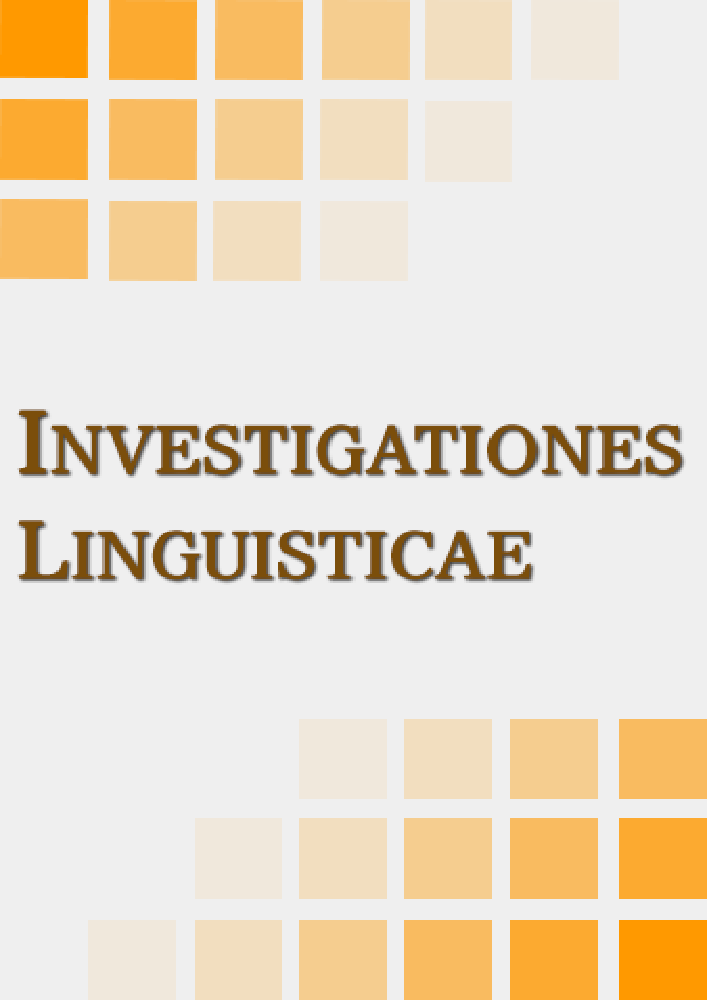Abstrakt
This paper presents experiments concerning properties of selected CV syllables. Acoustic speech signal related to particular syllables was analyzed using artificial neural networks. The goal of the analyses was to investigate whether realizations of particular syllables retain acoustic features distinctive of these syllables. Aditionally, a perception test aiming at identification of the same syllable set was carried out. In the test we analyzed to which degree it is possible to identify syllables isolated from the linguistic context. The paper discusses also results on distributional properties of syllables which indicate that such properties may play a significant role in speech perception.
Percepcja audytywna, właściwości akustyczne oraz cechy dystrybucyjne sylab w języku polskimBibliografia
Cooper R.S., Delattre P.C., Liberman A.M., Borst J.M., Gerstman L.J. 1952. Some experiments on the perception of synthetic speech sounds. Journal of the Acoustical Society of America, 24(6). s. 597-606.
Jurkowski M., Karolak S., Laskowski R., Lewicki A.M., Polański K., Saloni Z. 1999. Encyklopedia językoznawstwa ogólnego. (wyd. II). Zakład Narodowy im. Ossolińskich. Wrocław. s. 644.
Kopecek I. 1999. Speech Recognition and Syllable Segments. Publisher Springer. Berlin /Heidelberg. s. 1-203.
Massaro D. W. 1974. Perceptual units in Speech Recognition. JEP, vol. 102. s. 199-208.
Demenko G., Wypych M., Baranowska E. 2003. Implementation of Grapheme-to-Phoneme Rules and Extended SAMPA Alphabet in Polish Text-to-Speech Synthesis. W: Speech and Language Technology, vol. 7. PTFon. Poznań. s.79-95.
Dupoux E. 1993. Prelexical processing: the syllabic hypothesis revisited. W: Cognitive models of speech processing: The second sperlonga meeting, G. T. M. Altmann and R. Shillcock, Eds. Hove East Sussex UK: LEA, s. 81-114.
Hirihara T., Kato H. 1992. The efect of F0 on vowel identification.1992. W: Speech Perception, Production and Linguistic Structure. Burke. IOS Press.
Ladefoged P. 1975. A course in phonetics. Harcourt Brace Jovanovich. London. s. 217.
Liberman A.M., Delattre P.C., Cooper F.S. 1952. The role of selected stimulus variables in the perception of the unvoiced stop consonants. American Journal of Psychology, 65, s. 497-516.
Lisker L., Abramson A.S. 1967. Some effects of context on voice onset time in English stops. Language and Speech, 10. s 1-28.
Mehler. J. 1981. The role of syllables in speech processing: Infant and adult data. W: Philosophical Transactions of the Royal Society, vol. 295. s. 333-352.
Segui J. 1984. The syllable: A basic perceptual unit in speech perception ?,W: Attention and Performance X, H. Bouma and D. G. Bouwhuis, Eds. Hillsdale NJ: Erlbaum. s. 165-181.
Ohde R.N. 1984. Fundamental frequency as an acoustic correlate of stop consonant voicing. Journal of the Acoustical Society o America, 75. s. 224-230.
Raphael L.J., Dorman M.F. 1980. Silence as a cue to the perception of syllable-initial and syllable-final stop consonants. Journal of Phonetics, 8. s. 269-275.
Raphael L.J., Dorman M.F., Freeman F., Tobin C. 1975. Vowel and nasal duration as cues to voicing in word-final stop consonants: Spectrographic and perceptual studies. Journal of Speech & Hearing Research, 18. s. 389-400.
Tadeusiewicz R., Lula P. 2001. Statistica Neural Networks PL; Kurs użytkowania programu. StatSoft. Kraków. s. 5-86.
Tadeusiewicz R. 1998. Elementarne wprowadzenie do techniki sieci neuronowych z przykładowymi programami. Akademicka Oficyna Wydawnicza. Warszawa. s. 1-164.
Trask R.L. 1996. A Dictionary of Phonetics and Phonology. Routlege. New York (wyd.II). s. 327, 345.
